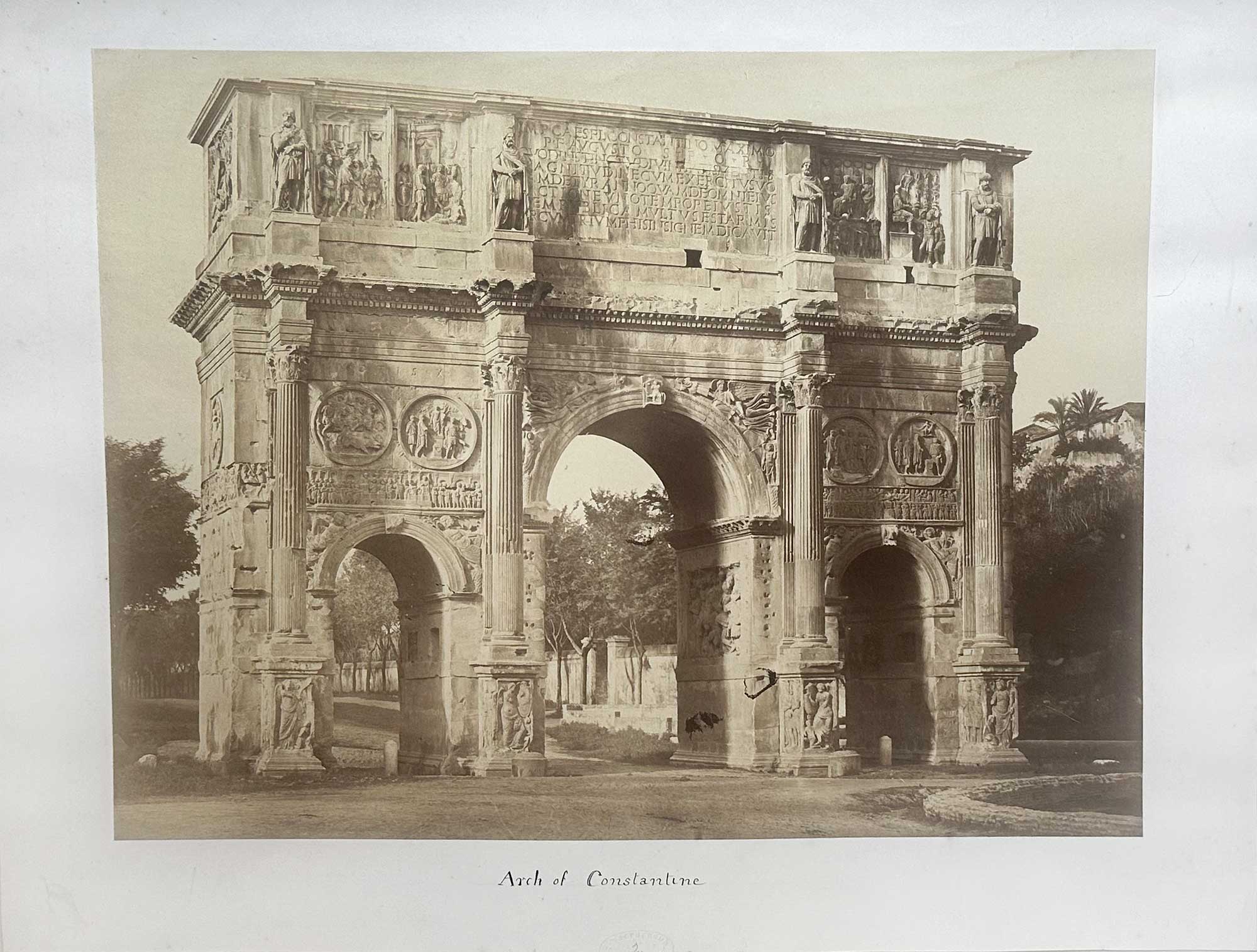
Arch of Constantine | North Facade
Year after year we are accustomed to see pictures from this inexhaustible source, with an attempt to poeticise the descriptions – an impossibility in ordinary hands. … One of the finest of these views is the Arch of Constantine, and on examining it you are struck with surprise at seeing so much you never saw before: you never suspected it had been so highly finished, and you never dreamt of his perfection of decay. . . . To the energy and ability of Mr. Macpherson all praise is due; the results of his labors cannot be surpassed. (1.)
The Arch of Constantine is a triumphal arch in Rome dedicated to the emperor Constantine the Great. The arch was commissioned by the Roman Senate to commemorate Constantine’s victory over Maxentius at the Battle of the Milvian Bridge in AD 312. Situated between the Colosseum and the Palatine Hill, the arch spans the Via Triumphalis, the route taken by victorious military leaders when they entered the city in a triumphal procession. Dedicated in 315, it is the largest Roman triumphal arch, with overall dimensions of 21 m (69 ft) high, 25.9 m (85 ft) wide and 7.4 m (24 ft) deep. It has three bays, the central one being 11.5 m (38 ft) high and 6.5 m (21 ft) wide and the laterals 7.4 m (24 ft) by 3.4 m (11 ft) each. The arch is constructed of brick-faced concrete covered in marble. – Wikipedia (2024)
1. The Art Journal, XXIV, 1862, p. 227. The first three photographs from the index of MacPhersons Photographs, Rome, list views of the Arch of Contantine, including the north and south facades, ca. 1852. Macpherson’s work was consistently well received by nineteenth-century critics. Special acclaim greeted a major exhibition that he staged in London in 1862: It opened during August in the rooms of the Architectural Photographic Association – to which Macpherson had sent works during the 1850’s – at 9, Conduit Street, and in October, it moved to the Polytechnic Institute on Regent Street (British Journal of Photography, XX, October 1, 1862, 374). Macpherson evidently travelled to London during the showing (British Journal of Photography, xx, September 1, 1862, 323).